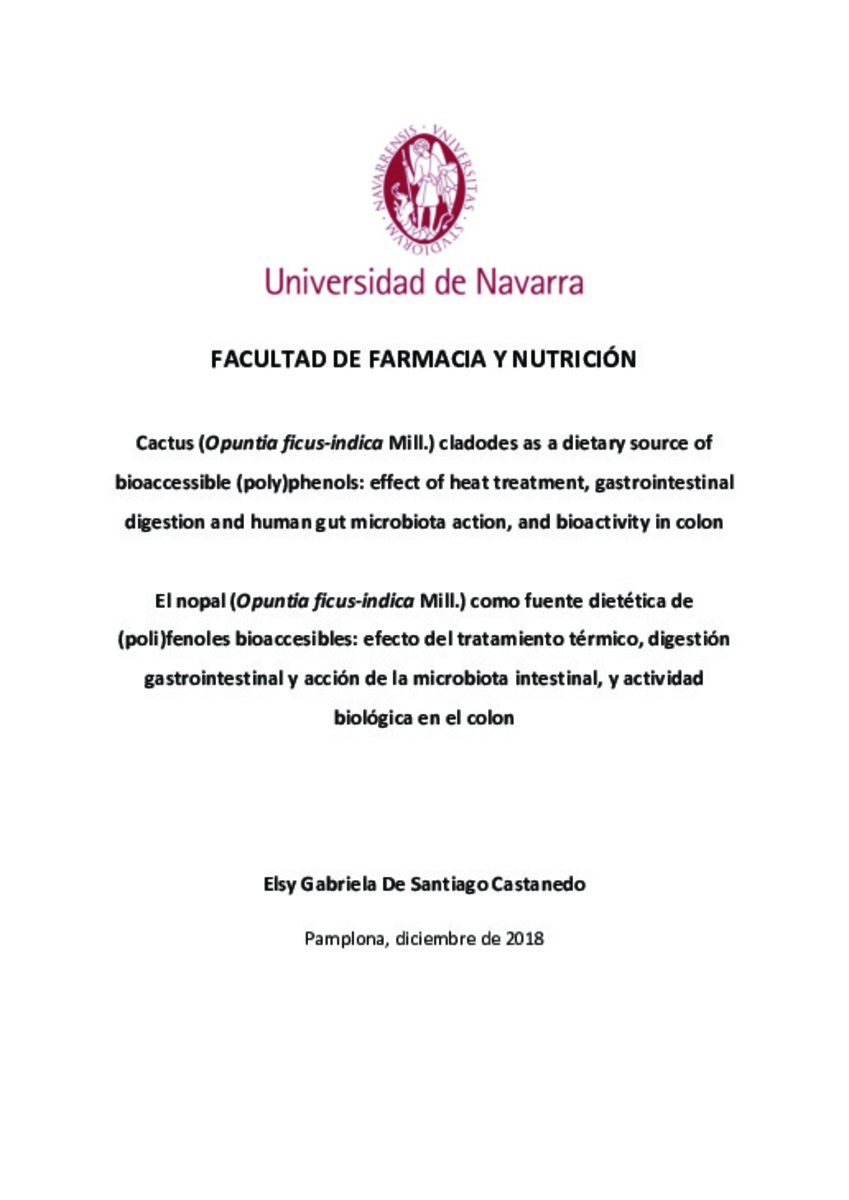Cactus cladodes (Opuntia ficus-indica) as a dietary source of bioaccessible (poly)phenols: effect of heat treatment, gastrointestinal digestion and human gut microbiota action, and bioactivity in colon
Keywords:
Digestión
Antioxidantes de los alimentos
Materias Investigacion::Ciencias de la Salud::Nutrición y dietética
Defense Date:
13-Dec-2018
Citation:
DE SANTIAGO CASTANEDO, Elsy. "Cactus cladodes (Opuntia ficus-indica) as a dietary source of bioaccessible (poly)phenols: effect of heat treatment, gastrointestinal digestion and human gut microbiota action, and bioactivity in colon". Peña, M. P. y Cid, M. C. (dirs.). Tesis doctoral. Universidad de Navarra, 2018.
Statistics and impact
0 citas en

0 citas en

Items in Dadun are protected by copyright, with all rights reserved, unless otherwise indicated.







